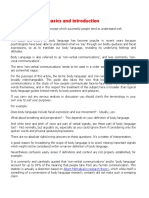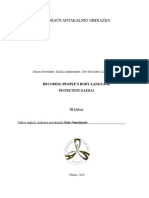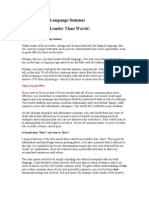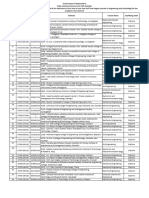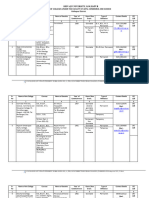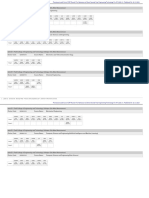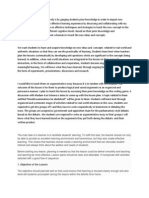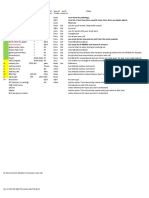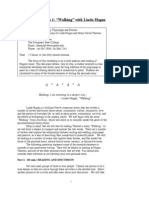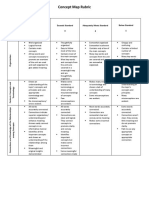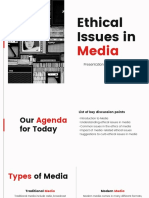A
MICRO-PROJECT
ON
Aspects of Body Languages
SUBMITTED TO
MSBTE
IN PARTIAL FULFILMENT OF REQUIRMENT OF DIPLOMA OF
COMPUTER ENGINEERING
UNDER I SCHEME
SUBMITTED BY
MR. KAMTEKAR AVADHUT RATNADIP.
MR. KAMTEKAR SANKET SURESH.
MR. KERKAR SUYASH SATISH.
MR. KHADILKAR ATHARV ABHAY.
MR. KHOBREKAR NANDKISHOR ASHISH.
MR. LUDBE OMKAR SAINATH.
UNDER THE GUIDENCE OF
MS. N.N.SANDAYE
FOR ACADAMIC YEAR 2021-2022
YASHWANTRAO BHONSALE POLYTECHNIC, SAWANTWADI
1|BCC Microproject
� MAHARASHTRA STATE BOARD OF TECHNICAL EDUCATION
CERTIFICATE
This is to clarify that, Roll No.
MR. KamtekarAvadhutRatnadip. 33
MR. KamtekarSanketSuresh. 34
Mr.KerkarSuyashSatish. 36
Mr.KhadilkarAtharvAbhay. 37
Mr.KhobrekarNandkishor Ashish. 38
MR. LudbeOmkarSainath. 39
Of First Semester of Diploma in Computer Engineering of Institute
YashwantraoBhonsale Polytechnic (1742)has completed the Micro-
Project satisfactorily in Course BUSSINESS COMMUNICATION USING
COMPUTER (22102)for the academic year 2021-2022 as prescribed
in curriculum.
Course Faculty HOD Principal
Seal Of
Institute
2|BCC Microproject
�GROUP MEMBERS:
Sr.No. Name Of The Student Roll Number
1. Mr. Kamtekar Avadhut Ratnadip 33
2. Mr. Kamtekar Sanket Suresh 34
3. Mr. Kerkar Suyash Satish 36
4. Mr. Khadilkar Atharv Abhay 37
5. Mr. Khobrekar Nandkishor Ashish 38
6. Mr. Ludbe Omkar Sainath 39
GUIDED BY:MRS. N.N.SANDAYE
3|BCC Microproject
� INDEX
CHAPTER CONTENT PAGE NO.
NO.
1. Introduction 1
2. Reading Body Language Signs and 2-3
Communications
3. Definition 4
4. Understanding How Body Language Works 5
5. Different Body Languages 7
6. Conclusion And Reference 13
4|BCC Microproject
� 1
Chapter no. 1:
INTRODUCTION
The study and theory of body language has become popular in recent
years because psychologists have been able to understand what we
'say' through our bodily gestures and facial expressions, so as to
translate our body language, revealing its underlying feelings and
attitudes. Body Language is also referred to as 'non-verbal
communications', and less commonly 'nonvocal communications'. The
term 'non-verbal communications' tends to be used in a wider sense,
and all these terms are somewhat vague. For the purposes of this
article, the terms 'body language' and 'non-verbal communications' are
broadly interchangeable. This guide also takes the view that body
language/non-verbal communications is the study of how people
communicate face-to-face aside from the spoken words themselves,
and in this respect the treatment of the subject here is broader than
typical body language guides limited merely to body positions and
gestures.
1|BCC Microproject
� 2
Chapter no. 2:
Reading Body Language Signs and
Communication
Why is Body Language Relevant?
Body Language is a significant aspect of modern communications and
relationships. Therefore, it is very relevant to management or leadership and to
all aspects of work and business where communications can be seen and
physically observed among people.
Body language is also very relevant to relationships outside of work, for example
in dating and in families and parenting.
In terms of observable body language, non-verbal (non-spoken) signals are
being exchanged whether these signals are accompanied by spoken words or
not.
➢ Body language works both ways:
• Your own positioning and movements reveal your feelings and meanings
to others.
• Other people's body language reveals their feelings and meanings to you.
The sending and receiving of signals happen on conscious and unconscious
levels.
The study of body language is also known as kinesics (pronounced 'kineesicks'),
which is derived from the Greek word kinesis, meaning motion.
2|BCC Microproject
� 3
➢ Body language is more than those brief descriptions.
• Body language certainly also encompasses where the body is in relation
to other bodies (often referred to as 'personal space').
• It certainly also includes very small bodily movements such as facial
expressions and eye movements.
• Body language also arguably covers all that we communicate through our
bodies apart from the spoken words (thereby encompassing breathing,
perspiration, pulse, blood pressure, blushing, etc.)
In this respect, standard dictionary definitions do not always describe the phrase
fully and properly.
3|BCC Microproject
� 4
Chapter no. 3:
DEFINITIONS
Body language - noun - the conscious and unconscious movements and
postures by which attitudes and feelings are communicated [for example]: his
intent was clearly expressed in his body language."
The Oxford Business English Dictionary offers a slightly different definition.
Appropriately and interestingly the Oxford Business English Dictionary
emphasizes the sense that it can be used as a tool, rather than it being an
involuntary effect with no particular purpose:
"Body language - noun - the process of communicating what you are feeling
or thinking by the way you place and move your body rather than by words
[for example]: The course trains sales people in reading the customer's body
language."
The OED dictionary definition of kinesics - the technical term for the study of
body language (and more loosely of body language itself) - depends on the
interpretation of 'non-verbal communication':
"Kinesics - the study of the way in which certain body movements and
gestures serve as a form of non-verbal communication... [and] body
movements and gestures regarded as a form of non-verbal communication."
➢ Body language is more than those brief
descriptions.
• Body language certainly also encompasses where the body is in relation
to other bodies (often referred to as 'personal space').
• It certainly also includes very small bodily movements such as facial
expressions and eye movements.
• Body language also arguably covers all that we communicate through our
bodies apart from the spoken words (thereby encompassing breathing,
perspiration, pulse, blood pressure, blushing, etc.)
In this respect, standard dictionary definitions do not always describe the phrase
fully and properly.
4|BCC Microproject
� 5
Chapter no. 4 :
Understanding How Body Language Works
Understanding body language involves the interpretation of several consistent
signals to support or indicate a particular conclusion.
Body Language Basics and Introduction
Body language is a powerful concept that is well understood by successful
people.
The study and theory of it have become popular in recent years because
psychologists have been able to understand what we 'say' through our bodily
gestures and facial expressions, so as to translate and reveal our underlying
feelings and attitudes.
• Body Language is also referred to as 'non-verbal communications', and
less commonly 'non-vocal communications'.
• The term 'non-verbal communications' tends to be used in a wider sense,
and all these terms are somewhat vague.
➢ Body Language Tends to Include:
• How we position our bodies
• Our closeness to and the space between us and other people (proxemics),
and how this changes
• Our facial expressions
• Our eyes especially and how our eyes move and focus
• How we touch ourselves and others
• How our bodies connect with other non-bodily things, for instance, pens,
cigarettes, spectacles and clothing
• Our breathing, and other less noticeable physical effects, for example, our
heartbeat and perspiration
5|BCC Microproject
� 6
➢ First impression
Body language is especially crucial when we meet someone for the first
time.
• We form our opinions of someone we meet for the first time in just a few
seconds, and this initial instinctual assessment is based far more on what
we see and feel about the other person than on the words they speak.
6|BCC Microproject
� 7
Different Body Languages
THE MOUTH
Mouth expressions and movements can also be essential in reading body language.
For example, chewing on the bottom lip may indicate that the individual is
experiencing feelings of worry, fear, or insecurity.
Covering the mouth may be an effort to be polite if the person is yawning or
coughing, but it may also be an attempt to cover up a frown of disapproval.
7|BCC Microproject
� 8
GESTURES
Gestures can be some of the most direct and obvious body language signals. Waving,
pointing, and using the fingers to indicate numerical amounts are all very common and easy
to understand gestures.
Some gestures may be cultural, however, so giving a thumbs-up or a peace sign in another
country might have a completely different meaning than it does in the United States.
8|BCC Microproject
� 9
THE ARMS AND LEGS
The arms and legs can also be useful in conveying nonverbal information. Crossing the arms
can indicate defensiveness. Crossing legs away from another person may indicate dislike or
discomfort with that individual.
Some gestures may be cultural, however, so giving a thumbs-up or a peace sign in another
country might have a completely different meaning than it does in the United States.
9|BCC Microproject
� 10
POSTURE
Posture can convey a wealth of information about how a person is feeling as well as hints
about personality characteristics, such as whether a person is confident, open, or submissive.
Open posture : involves keeping the trunk of the body open and exposed. This type of posture
indicates friendliness, openness, and willingness.
Closed posture :involves hiding the trunk of the body often by hunching forward and keeping
the arms and legs crossed. This type of posture can be an indicator of hostility, unfriendliness,
and anxiety.
10 | B C C M i c r o p r o j e c t
� 11
PERSONAL SPACE
Intimate Distance: 6 to 18 inches
This level of physical distance often indicates a closer relationship or greater comfort
between individuals. It usually occurs during intimate contact such as hugging, whispering,
or touching.
Personal Distance: 1.5 to 4 feet
Physical distance at this level usually occurs between people who are family members or
close friends. The closer the people can comfortably stand while interacting can be an
indicator of the level of intimacy in their relationship.
Social Distance: 4 to 12 feet.
In cases where you do not know the other person well, such as a postal delivery driver you
only see once a month, a distance of 10 to 12 feet may feel more comfortable.
Public Distance: 12 to 25 feet
Physical distance at this level is often used in public speaking situations. Talking in front of a
class full of students or giving a presentation at work are good examples of such situations.
11 | B C C M i c r o p r o j e c t
� 12
Eye contact
Eye contact. Since the visual sense is dominant for most people, eye contact is an especially
important type of nonverbal communication. The way you look at someone can communicate
many things, including interest, affection, hostility, or attraction. Eye contact is also
important in maintaining the flow of conversation and for gauging the other person’s interest
and response.
Eye contact is a type of body language that is extremely important during communication and
conversation. Sometimes, our eyes and body language speak even more than words. Keeping
eye contact with the person you are talking to shows that you are actively listening and
paying attention
12 | B C C M i c r o p r o j e c t
� 13
Conclusion:
We worked as a team on this project. There were 6 of us in the team. We asked Ma’am of
BCC that we are going to make a project on this subject, is this subject good or Ma’am told
us that it is good for the project. We then asked who was on our team and got to know
everyone's opinion. Everyone thought about it. Then we gave everyone a little bit of work to
do. Everyone searched for information. Out of all the information, we chose the best
information for the project. Then he started working on it. All the members got together a
little bit on the project and created an BCC Micro-project and showed it to the teacher. After
the teacher asked us to make some changes, we made the changes. Then our final BCC
microproject was created.
REFERENCES
1. https://www.verywellmind.com/understand-body-language-and-facial-
expressions-4147228
2. https://www.google.com/search?q=GOOGLE&oq=GOOGLE&aqs=chro
me.0.69i59j35i39j46i67i131i199i433i465j0i67i433j0i67i131i433j69i60l3
.3328j0j7&sourceid=chrome&ie=UTF-8
3. https://www.businessballs.com/self-awareness/body-
language/#definitions
4. https://en.wikipedia.org/wiki/Facial_expression
13 | B C C M i c r o p r o j e c t








